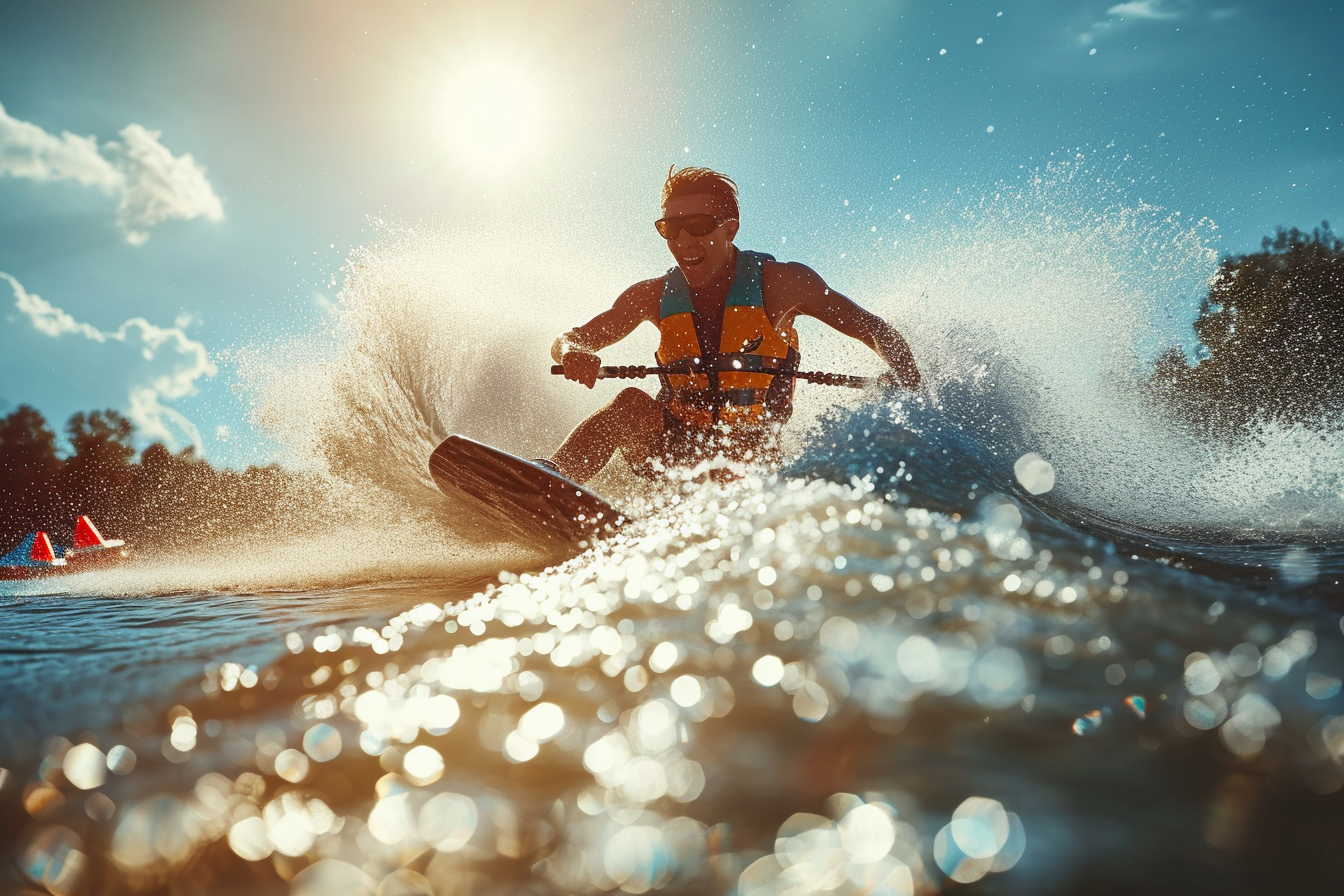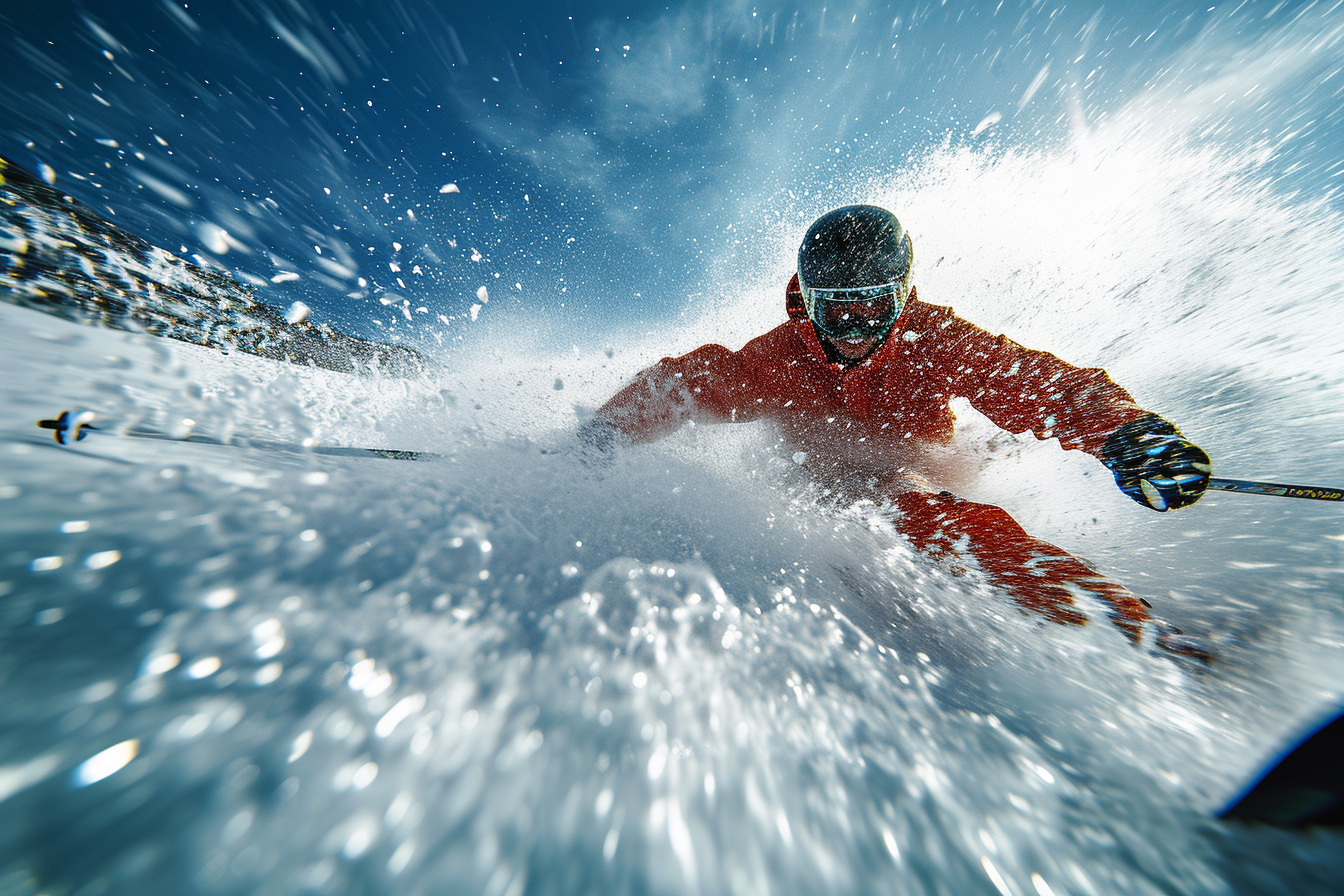Ski Nautique or water skiing, a thrilling sport that couples physical prowess with aquatic speed, has become a staple of competitive water sports worldwide. It requires a skier to skim across the water’s surface while being towed by a motorboat, moving at varying speeds and executing an array of skilled maneuvers. Ski Nautique competitions take this exhilarating activity to new heights, with participants demonstrating exceptional agility, strength, and precision.
Origins and evolution of competitive ski nautique
Water skiing originated in the early 20th century and has grown significantly since. Early exhibitions of skill on water led to the formalization of competitive events. These gatherings have evolved to include several official disciplines, each with specific rules, equipment, and judging criteria. Ski Nautique competitions now feature globally, including prestigious tournaments such as the World Water Ski Championships.
Disciplines within ski nautique competitions
Slalom skiing
Slalom skiing is a demanding discipline that involves a single ski. Skiers navigate through a course of buoys, making tight turns while maintaining high speeds and balance. Precision and technique are paramount as athletes aim to complete the slalom course with the fewest errors and in the shortest time possible.
Jump skiing
Jump Skiing propels athletes to daring heights as they aim to travel as far as possible off a ramp. Competitors approach the jump at high speed, aiming to perfect their technique to achieve maximum distance. Judges score based on the length of the jump, with additional points for form and style.
Trick skiing
Trick skiing showcases the skier’s acrobatic skills as they perform a series of complex maneuvers within a limited time. Each trick has a difficulty rating and the athletes’ objective is to amass the highest score by executing a sequence of high-scoring tricks with precision and style.
wakeboarding
Though distinct from traditional Ski Nautique, wakeboarding has found its niche within the water sports competitions. Riders perform aerial tricks and maneuvers on a wakeboard, using the boat’s wake to launch themselves. Consistency, creativity, and difficulty of the performed tricks are key in earning high scores.
Barefoot skiing
Barefoot skiing adds an extra layer of challenge by removing the skis altogether. Athletes glide on the water using only their feet, reaching impressive speeds. This discipline is known for its difficulty and requires skiers to possess exceptional balance and core strength.
Competitive boats and equipment
Boats specifically designed for ski nautique
The boats used in Ski Nautique competitions are designed with precision to ensure optimal conditions for the athletes. They are equipped with powerful engines, innovative hull designs, and speed control systems to create consistent wakes and facilitate high speeds. The Ski Nautique brand, in particular, is recognized for manufacturing boats that are at the forefront of competitive performance.
The role of the boat driver
An often-overlooked but crucial member of the competition is the boat driver. Precision in driving patterns and consistent speed are critical for athletes’ performance. Expert boat drivers work in tandem with skiers, anticipating their movements and adjusting course as necessary to aid in the execution of tricks and turns.
Ski and safety equipment
Athletes use specialized skis designed for slalom, jumps, or tricks, each optimized for their respective events. Helmets, life vests, and gloves are crucial safety gear to protect competitors during high-speed spills and impacts. Ensuring up-to-date and well-maintained equipment is vital for safety and performance.
Training and physical demands
The importance of strength and endurance
Top-level Ski Nautique athletes undergo rigorous training regimens to build the strength and endurance necessary to compete. Core strength is particularly essential as it aids in maintaining balance and posture while traversing the water’s surface. Endurance training ensures that athletes can sustain high energy levels throughout their performance.
Technique and skill development
Hours of focused practice are devoted to refining techniques for each discipline. Athletes work with coaches to enhance their skills, improve form, and increase their repertoire of tricks. Video analysis is often used to break down and scrutinize individual performances for incremental improvements.
Understanding the rules and scoring

The rulebook of ski nautique competitions
Each discipline within Ski Nautique has a detailed set of rules that govern how competitions are conducted. These rules specify everything from boat speed to the acceptable execution of tricks and jumps. Familiarity with the rulebook is essential for competitors aiming to optimize their performances and avoid disqualification.
Scoring systems explained
Scoring systems in Ski Nautique vary by discipline. In slalom, skiers get points for each successfully navigated buoy; in trick skiing, each trick completed within the pass earns points based on difficulty; and in jump skiing, distance is measured to determine scores. Judges also factor in form and execution when tallying final results.
Competitive strategy and mental preparation
Psychological resilience in competitions
Mental fortitude is as critical as physical agility in Ski Nautique competitions. Athletes must maintain focus and composure under pressure, especially during high-stakes events. Effective competitors devise mental strategies to stay calm, maintain confidence, and handle the stress of competition.
Analyzing the competition
Skiers often review their competitors’ performances to gain strategic insights. Understanding the strengths and weaknesses of opponents can guide training priorities and tactical decisions during competitions. This analysis can also help skiers set their performance benchmarks to strive for victory.
International ski nautique federations and events
The role of governing bodies
Organizations like the International Water Ski & Wakeboard Federation (IWWF) oversee international standards for Ski Nautique competitions. These governing bodies play essential roles in organizing world championship events, setting rules, and promoting the sport globally.
Prestigious international competitions
Renowned competitions attract world-class athletes and are a testament to the sport’s growth. Events like the IWWF World Water Ski Championships represent the pinnacle of competition, with participants from around the globe competing for top honors. These events not only serve as platforms for elite competition but also as celebrations of the sport’s international community.
Participation and inclusivity in ski nautique
Encouraging diverse participation
The Ski Nautique community strives for inclusivity, with initiatives to encourage participation across ages, genders, and backgrounds. Dedicated categories for juniors, seniors, and adaptive athletes ensure that the sport is accessible to a wide range of participants, reflecting the spirit of diversity and equality in sports.
Environmental considerations
Sustainable practices in the sport
Amidst growing environmental concerns, the Ski Nautique community acknowledges the responsibility to adopt sustainable practices. Efforts to minimize ecological impact include the use of cleaner, more efficient boat engines and conservation initiatives at events to preserve waterways for future generations.
The future of ski nautique competitions
Ski Nautique competitions, a dynamic intersection of athleticism and innovation, continue to evolve. Advancements in technology, both in equipment and training methodologies, point toward a future where athletes push the boundaries even further. As competitors refine their abilities, and as fans globally revel in the spectacle, the sport is poised for dramatic growth and continued excitement.
Engaging with the ski nautique community
For individuals eager to dive deeper into Ski Nautique, numerous resources are available. Local clubs often offer training and advice for beginners. Online forums, social media groups, and educational portals provide platforms for enthusiasts to connect, share experiences, and stay abreast of the latest developments in the sport. Engaging with this community can provide valuable insights and foster a deeper appreciation for the intricacies of Ski Nautique competitions.

Leave a Reply